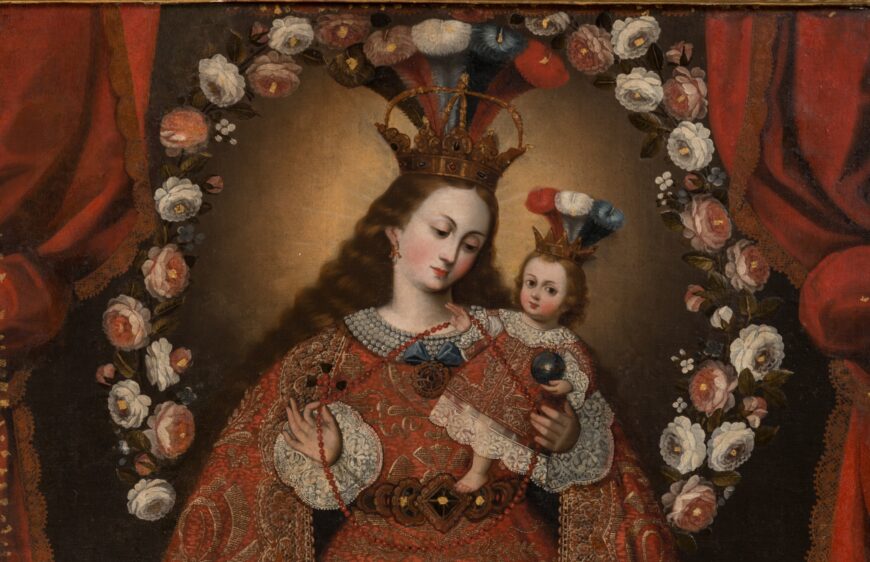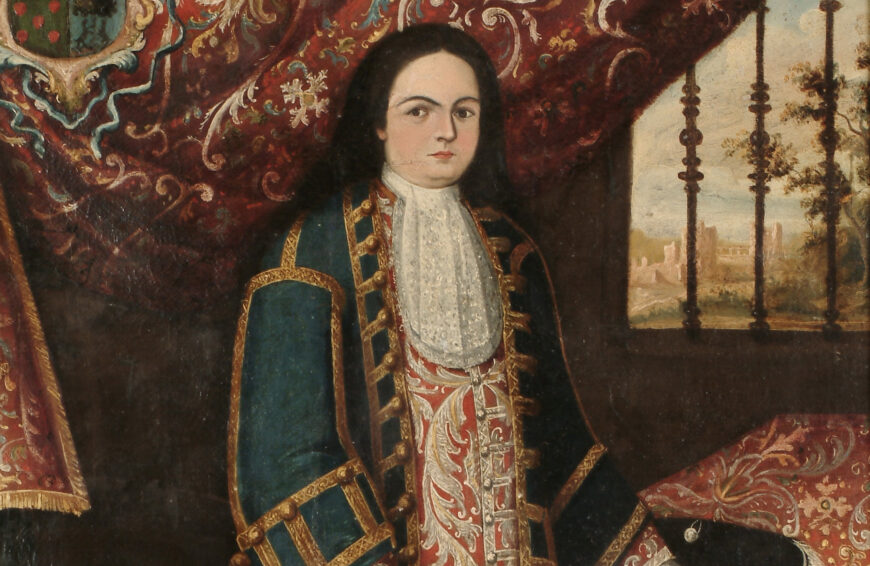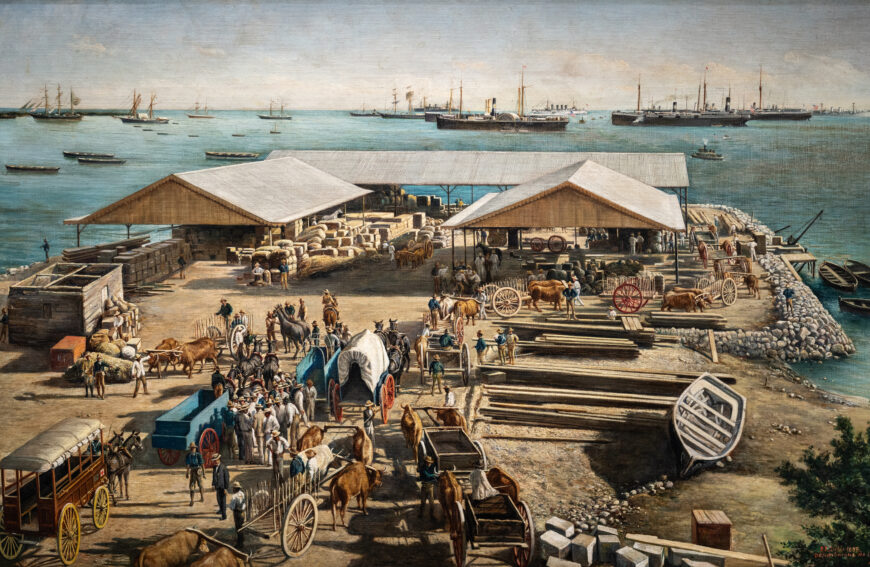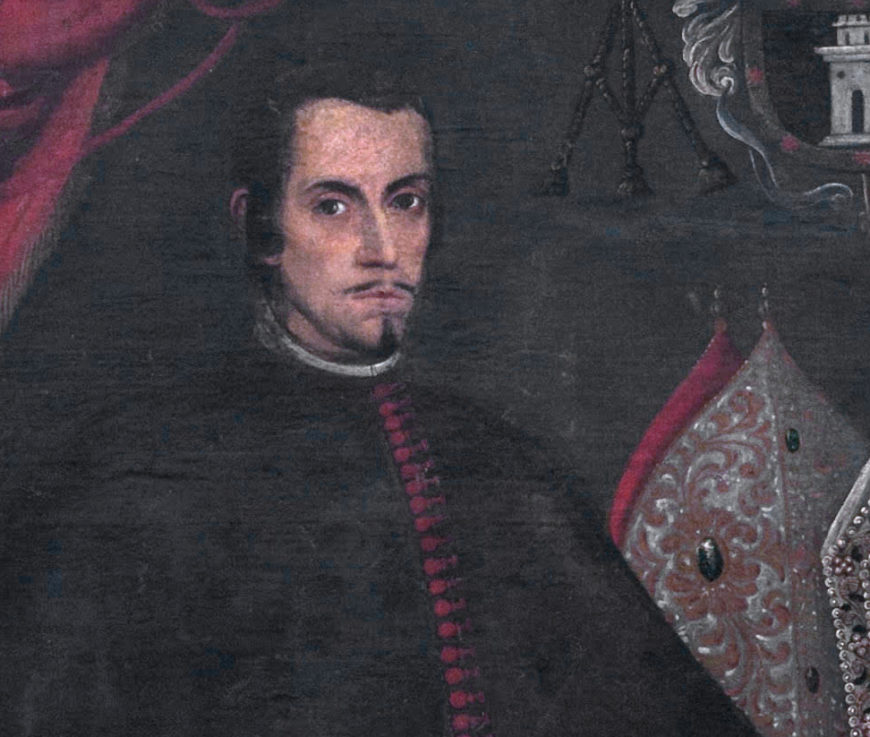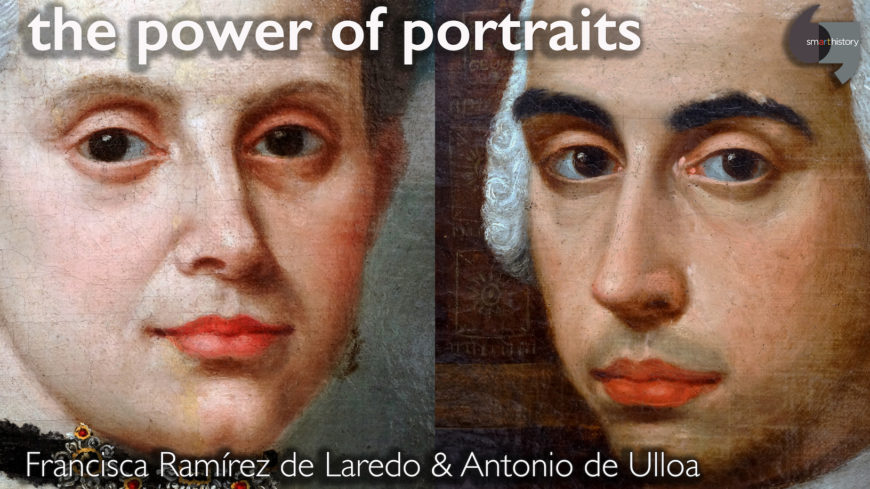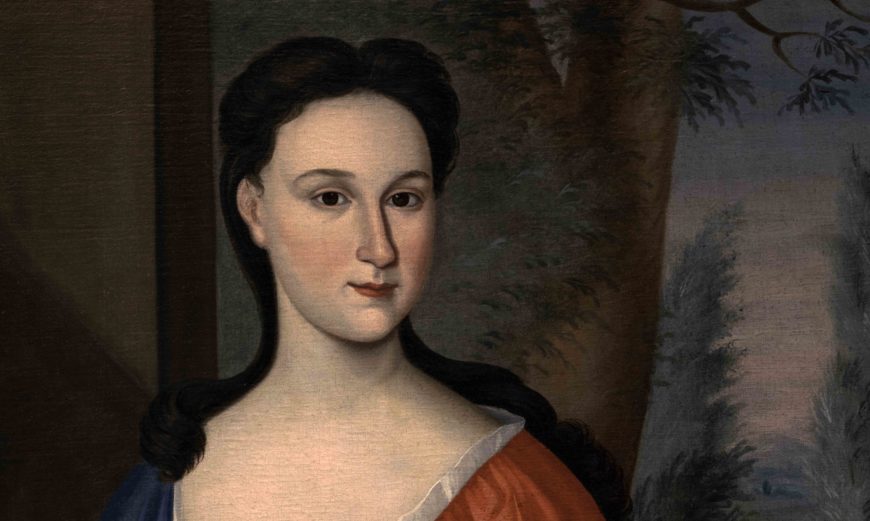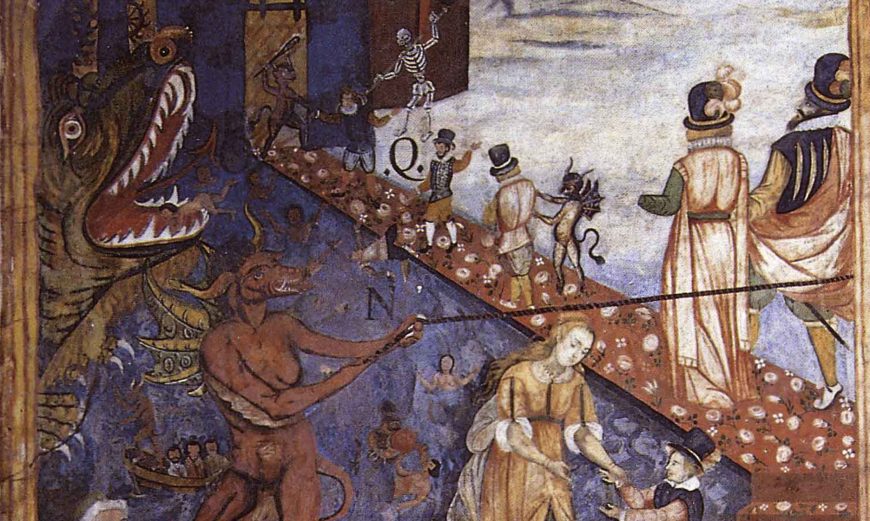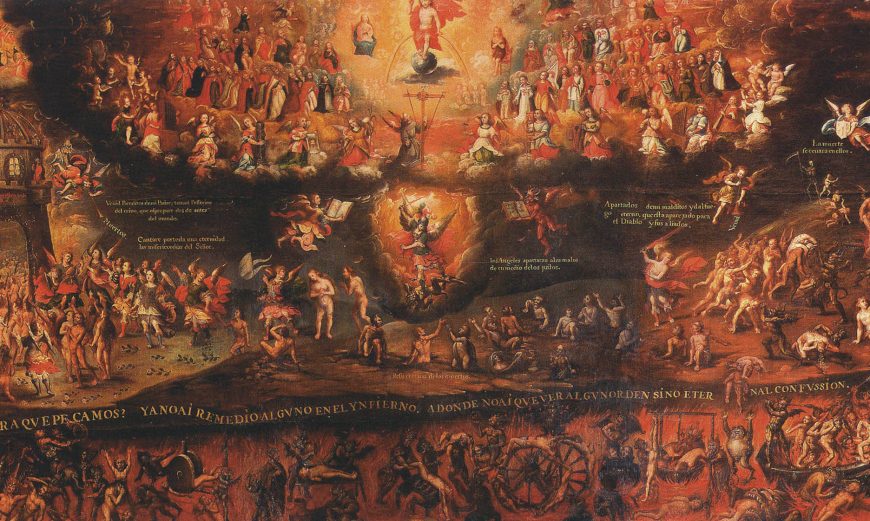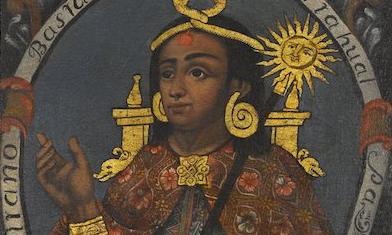Andrés de Concha, St. Cecilia, 1590, oil on wood (Museo Nacional de Arte, Mexico City, Mexico)
[0:00] [music]
Dr. Beth Harris: [0:10] We’re in the National Museum of Art in Mexico City, looking at a painting of Saint Cecilia by Andrés de Concha. Saint Cecilia was connected with music. She supposedly lived in the 2nd or 3rd century. On her wedding day, music was being played and she decided not to focus on that music, but instead to focus on the divine.
Dr. Lauren Kilroy-Ewbank: [0:26] She convinces her husband to have an abstinent marriage, meaning they’re refraining from sexual relations. Her husband, Valerias, asks her to show him the angel that protects her, and the angel comes and crowns them both. And so that crown of roses that we’re seeing here refers to that moment of the story.
[0:43] The story continues. She and her husband will be executed. What’s remarkable is that, instead of focusing on the violence of her martyrdom — eventually she’s beheaded, she’s struck in the neck — here, we see this elegant neck that’s exposed to us, but we don’t see the wounds.
Harris: [0:57] Saint Cecilia lived during the time of the Roman Empire, when Christians were persecuted. We see her seated in an earthly setting. We also have a heavenly setting. We have the Virgin Mary at the top with the Christ Child, in the middle of a sun and clouds. Saint Cecilia looks up towards the heavens, this foreshortened angel comes in to crown her.
Kilroy-Ewbank: [0:00] Andrés de Concha is really focusing on the glory of this saint.
Harris: [1:21] Where I feel like I can almost hear the music of the heavens.
Kilroy-Ewbank: [1:25] This painting was completed around 1590 by this artist who came from Sevilla, in Spain, and made his way to the Americas as part of this early wave of immigrant artists to come and fill the need for more Europeanized-looking art.
Harris: [1:39] There was a great need for art. There were churches that were being built that needed altarpieces. In fact, this painting was meant for a church here in Mexico City.
Kilroy-Ewbank: [1:49] We think for the Church of Saint Augustín, and it would have been likely placed in the choir, which makes a lot of sense, given the subject matter of the scene, to see this nice mirroring of the organ in the sky in the heavens with the one that we assume is on the terrestrial, the earthly realm, it’s just behind Saint Cecilia.
[2:05] Then we see a mirroring of the books of music, and this incredible detail on the table. We see this open book of music, where we can read the musical notations, and that’s mirrored with the book that’s open and being read by angels in the sky.
Harris: [2:18] We have a sense of a division between the celestial realm and the earthly realm — the blues and silvers of the spiritual realm and the greens and browns of the earthly realm. We also have a sense of a vertical line that unites the Virgin Mary and Christ with Saint Cecilia.
Kilroy-Ewbank: [2:35] There are these Mannerist tendencies here, too. We see that in the angel playing the harp, where you have these pinks and greens, like shot silk, and even in some of the ambiguous spatial dimensions that we see here in the painting.
Harris: [2:47] We can’t measure the space between Saint Cecilia and the angel playing the organ. The organ itself is overly foreshortened. There’s ambiguity in the treatment of her anatomy. Her forearm seems too long, her fingers too long, but that’s also contrasted with areas of the painting where we do see the artist paying attention to small details.
Kilroy-Ewbank: [3:09] One of my favorite details is the tassel on what is probably velvet or some type of luxury material that is draped over the table. The artist has very carefully delineated each little piece of the fringe on this textile.
Harris: [3:22] Or we could see it also in the tassels on that green fabric just behind Saint Cecilia, or in attention to the luxuriousness of the brocade of her dress, this Mannerist ambiguity of space and attention to the body, but also Northern Renaissance-inspired attention to detail. So, these influences coming together here in New Spain in the late 16th century.
Kilroy-Ewbank: [3:45] He belongs to this first wave of European artists who were ushering in new artistic techniques and new strategies that are different than what you’re finding in these missionary complexes called conventos, where you have mural paintings and art objects that are being made by the Indigenous population.
[4:01] It’s this really interesting moment where you start to see all of these influences coming together and creating something new.
Harris: [4:08] This move from paintings on walls, which were part of an Indigenous tradition, to the tradition of painting on canvas.
Kilroy-Ewbank: [4:15] Something that would have signaled a more Europeanized object.
[0:00] [music]



